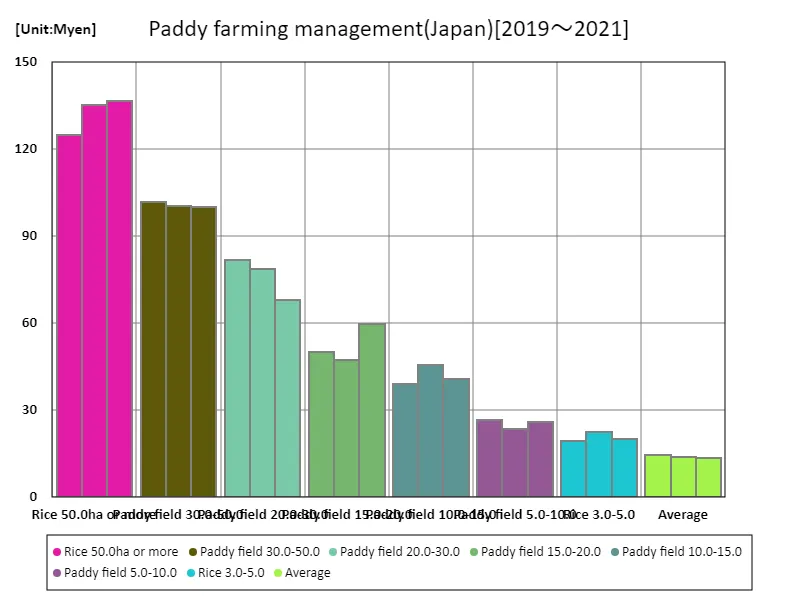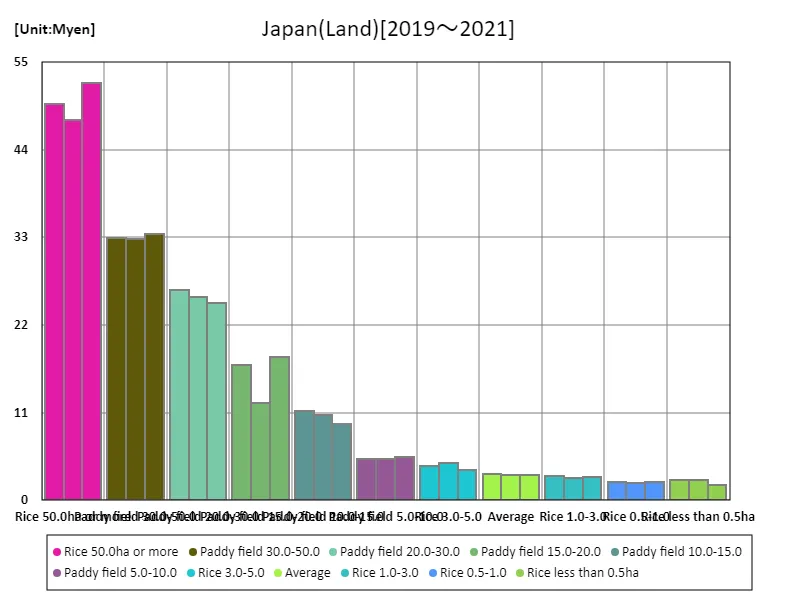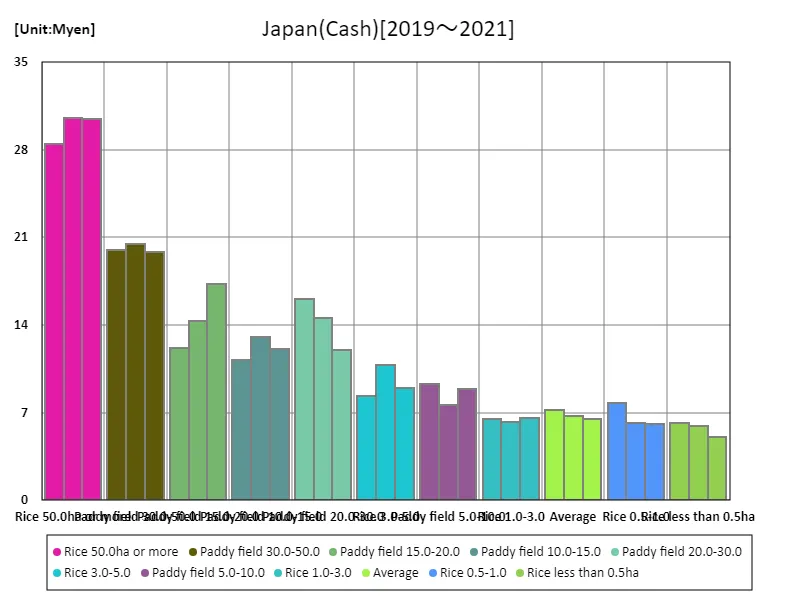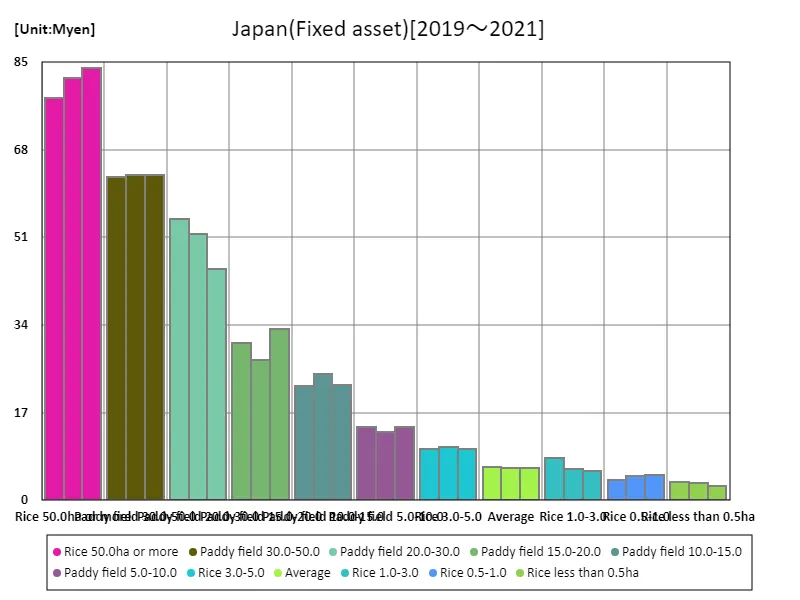Abstract
In 2021, agricultural assets showed significant value variation based on land size and crop type. For paddy fields of 50 hectares or more, the maximum value reached 137 million yen, reflecting the substantial investment required for large-scale rice farming. Over the years, the trend has shifted toward consolidation of farming operations, with larger farms accumulating higher asset values. This is driven by economies of scale, increased land acquisition, and enhanced agricultural technology. Cash, deposits, and accounts receivable also indicate improved financial management among larger producers, signaling stronger economic sustainability in the sector.
Assets
From 2019 to 2021, agricultural asset values, particularly for rice paddies, saw significant growth, with 2021 marking the peak at 137 million yen for paddy fields of 50 hectares or more. These large-scale farms now reach 100% of their highest asset value, reflecting the consolidation of agricultural operations. This trend highlights a shift toward more efficient, larger-scale farming, driven by economies of scale, improved technology, and increased land acquisitions. As a result, the financial standing of these larger farms has strengthened, allowing for better management of cash, deposits, and accounts receivable.


The maximum is the latest one, 137Myen of Rice 50.0ha or more
Land
As of 2021, land values for paddy fields showed significant variation, with the highest recorded at 52.5 million yen for farms of 50 hectares or more, while the average was 14.3 million yen. The total value for these fields reached 158 million yen. This data reflects a growing trend toward larger, more consolidated farming operations, where economies of scale contribute to higher asset values. Smaller paddy fields tend to have lower land values, indicating a disparity in the financial standing of smaller versus larger operations. The trend points to increasing investment in land, especially by larger producers, driven by technological advancements and a focus on efficiency.


The maximum is the latest one, 52.5Myen of Rice 50.0ha or more
Cash, deposits, etc, and accounts receivable
As of 2021, cash, deposits, and accounts receivable for paddy fields of 50 hectares or more reached a peak of 33.6 million yen, reflecting strong financial management within large-scale farming operations. This high value indicates improved liquidity and the ability to manage operational costs effectively, supporting investment in advanced technologies and efficient production methods. The trend shows that larger farms are increasingly financially stable, with a higher capacity to secure and manage funds, enabling them to weather market fluctuations and maintain competitiveness in the agricultural sector.


The maximum is 30.6Myen[2020] of Rice 50.0ha or more, and the current value is about 99.7%
Fixed asset
As of 2019, fixed assets for rice paddy fields of 50 hectares or more reached the highest value of 83.9 million yen, reflecting substantial investments in equipment, infrastructure, and technology. This trend highlights the growing focus on large-scale, capital-intensive farming operations in Japan, where economies of scale enable more efficient production. The high fixed asset value suggests that these farms are better equipped to manage large volumes of rice production and implement advanced farming techniques. This consolidation trend is vital for improving productivity and maintaining competitiveness in the agriculture sector.


The maximum is the latest one, 83.9Myen of Rice 50.0ha or more



Comments